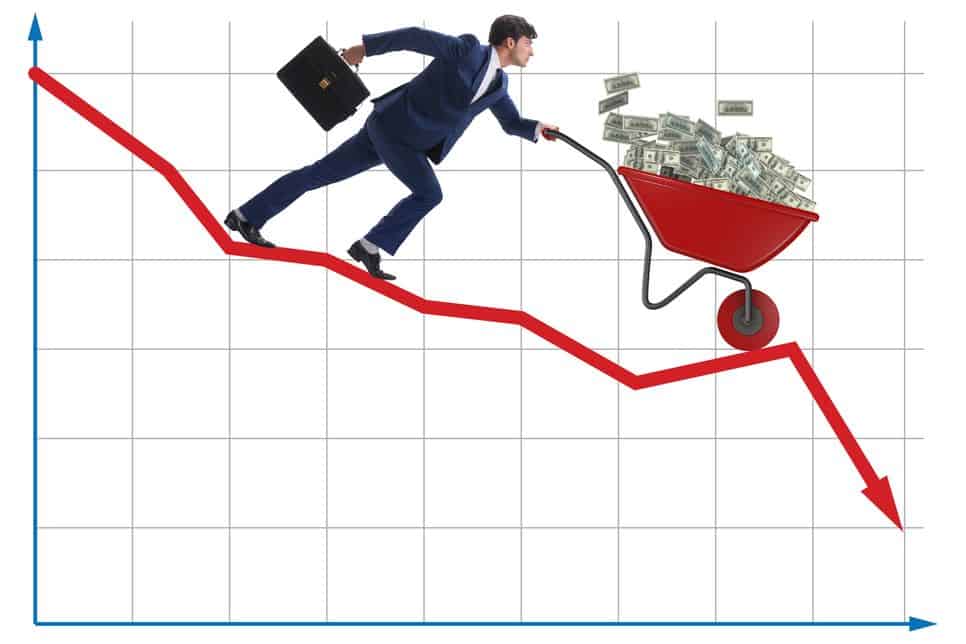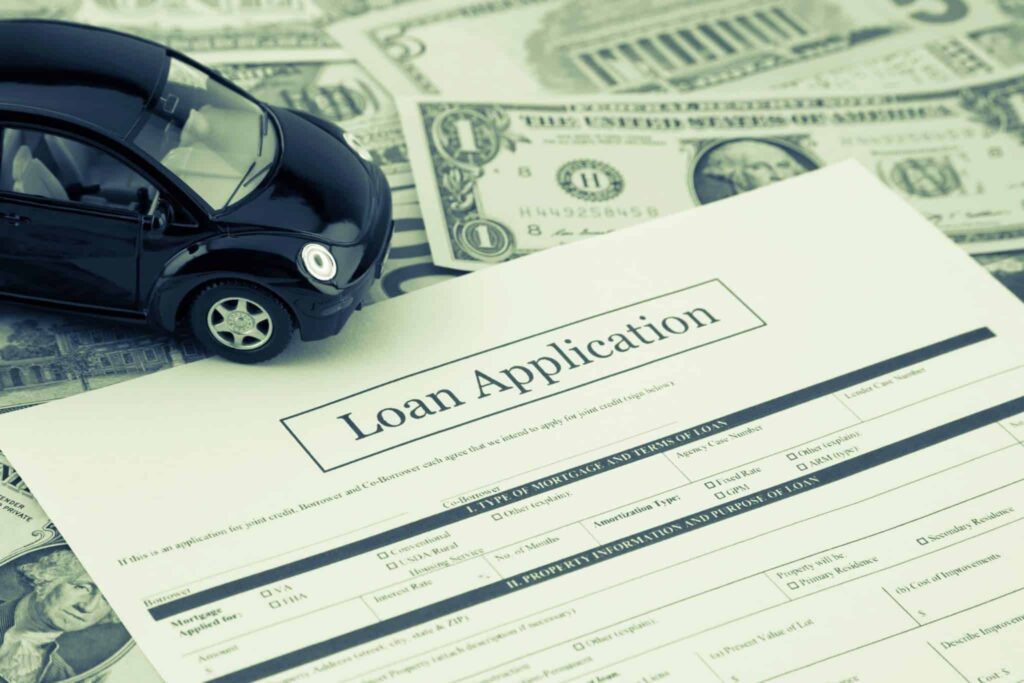5 January 2020 Concept Car
Are you looking for car loans for used cars? You’re not the only one. Recent data suggests that the market for second hand vehicles continues to thrive. The number of used cars sold in the third quarter of 2018 may have experienced a slight dip. But it remained near its all times high.
A used car loan is therefore quite a common occurrence. And yet, you may still feel confused about where to find the best deal.
In this huge special, we have put together absolutely everything you need to know. We’ll analyse the differences between a loan for a new car and a used car. We’ll show you concrete steps how to find the loan that’s right for you. And we throw in a few useful recommendations for good measure.
First off, though, let’s begin with stating just what a good decision you’re making.
Do you like the smell of a new car? The sensation of running your hands across the fabric of its seats? The feeling of owning a state of the art technological device?
If so, you are going to have to pay more for the experience.
All across the world, it seems, the price difference between used and new cars is widening. As reported by CNBC, a new car loan was $11,000 more expensive than the average car loan for a used car.
The reason for the widening of the gap is not that loans are becoming more expensive. It’s that manufacturers have raised prices for their new models.
If you add to this that new cars are also disproportionally affected by depreciation, the case for buying used is getting stronger by the day.
Or is it? For many years, experts have tried to put a number on the cost differential between new and used cars. They have come up with surprisingly varying conclusions.
While American statistics seem to suggest that new cars are getting ever more expensive, used car loans appear to be getting cheaper just across the border. As reported by the Canadian Globe and Mail, loans have become so affordable that sales for new cars were going through the roof.
So which is it? Are used cars becoming more or less attractive? Curiously, both may be true.

The web is filled with calculations explicating the costs of used and new cars. All of them are slightly different. So we’ve looked at a few of them to find general tendencies.
Here are the results of our survey:
All of the numbers in the examples are strictly speaking correct. The issue lies in some of the underlying assumptions.
For one, all quoted institutions are comparing a new car to a used one aged 3-4 years at maximum. At this age, second hand vehicles are still pretty expensive. So the real test would be to compare new cars to, say, a seven year old model. These are usually still great value and can last many, many happy years.
Another big point are the assumed costs of driving a used car versus the assumed cost benefits of driving a new one. In a revealing feature, this is money had a few insightful points to make here:
“Of course, comparing like-for-like cars means the new model is always going to be far more expensive the one purchased secondhand. Take the Fiesta for instance. If you bought a new three-door Zetec with the 1.25-litre petrol engine MoneySuperMarket used, the RRP is £13,545. Say you get a 10 per cent discount from the dealer, that’s £12,190. A quick scan of AutoTrader and you can pick up a five-year-old version with the same engine that’s covered average mileage of 40,000 (based on 8,000 miles a year) for £4,800. That’s a £7,390 difference in price. If you own the car for five years, that then equates to £1,478 a year.”
They were also highly critical of calculations using the MPG numbers provided by the manufacturer at face value. These tend to be distorted heavily towards new cars, thereby over-emphasising their merits.
What is true is that dealers will offer you plenty of incentives for opting for a new model. These incentives and special offers can significantly reduce the margin between a new and an old car.
You may ask why dealers are able to do this.
For one, loan rates for new cars are lower than those for second hand ones to begin with. The reason: New cars represent less of a risk. This makes sense to a degree. After all, new cars have a far higher value. If the dealer or the bank need to repossess the vehicle, they can get back more money with the latest model rather than an out of date version.
Especially for manufacturers, selling new cars is essential. All of them are also participating on the second hand market by means of CPO programs. But other than that, they are only making money through sales of factory new vehicles. This is why many manufacturers will do everything in their power to convince customers to buy new.
Finally, it is an open secret that dealerships don’t make their biggest cut on the actual sale of a car. They earn the most with repairs. servicing and spare parts. So it can pay off to grant you a zero percent deal first – and then make money by locking you into a servicing contract.

If this sounds like a serious argument in favour of buying new, it is. The brutal truth, however, is that without these incentives, it would be very hard to sell a single new car.
This is because depreciation is eating away at your new car’s value faster than rust. All cars already lose several thousands of Pounds of value the moment you drive them off the car lot. Within the first year, they’ll shed up to 25%-30%. Within 3-4 years, its total value will have halved.
Depreciation can be so extreme, that you can owe more on the vehicle than it is worth at a given moment. This is called ‘being upside down’ on a car loan.
Second hand cars also experience depreciation. But since they have already taken the largest hit, they depreciate slower and a lot less in absolute terms. At around the 5 year mark, a car will be worth 40% of its original purchase price. Five years later, it will typically be worth 20%. After that, the rate slows down even more.
Read more about these pernicious effects in our huge car depreciation guide.
Depreciation is significant, because it leads to some interesting paradoxes.
Imagine the choice between a brand new car and a one day old car of the identical model. The one year old car will be significantly cheaper, although it will feel almost identical. The money you lose on that very first day is something you’ll never get back.
The way depreciation works means that older cars are actually better at preserving their value. Buy a ten year old vehicle, keep it in good shape and you may be able to re-sell it after another three years at exactly the same price!
Some will argue that you can only build a deep relationship with a car if you bought it new. This, however, is approaching things from the wrong angle. As Autotrader correctly asserts:
“There’s usually an emotional tie with a car that’s missing in our relationship with the vacuum cleaner or washing machine. But in reality, a car is just another appliance. It’s not a buddy; it’s not an investment. It can convey status and provide some pleasure, But it won’t make us smarter, better looking, more interesting or wealthier.”
It is sometimes argued that there is one case where buying new makes sense despite depreciation: If you intend to drive your car until its wheels figuratively (or literally) fall off.
Over time, after all, depreciation gradually levels out. If you’re not selling your car, this line of reasoning goes, you can not lose any money on depreciation. This approach can make a new car suddenly seem a lot more attractive.
Holding on to your car for as long as possible can indeed be a sensible strategy. Certainly, thanks to significant quality improvements, you can drive most contemporary models for many hundreds of thousands of miles. However, a long life does not reduce the benefits of buying used.
After all, the difference in purchasing price still remains. So if your new car costs 11,000 Pounds more than a used one of the same make, then this difference remains.
Perhaps the experience of driving a new car is worth it for you. But in terms of finances, new will always be more expensive.

Now we’ve definitively established that used cars are cheaper, let’s turn towards some general considerations.
The first question you should ask yourself is what you really need. Admittedly, used car loans are easier to obtain than new car loans. But they will still cost you. Make sure you follow your requirements, not your dreams.
We’ll leave the question whether or not you actually need a car at all to others. For the moment, it should suffice that you get your priorities right.
Edmunds has compiled a useful list of questions to ask yourself:
An important question all too often forgotten is how long you’re going to use your car. This matters for a variety of reasons:
Generally speaking, however, you don’t need to be overly afraid you’ll buy a lemon. According to finder, used cars are “more reliable than you might expect. Cars typically don’t need any major maintenance until they have at least 100,000 miles — far after the 36,000 miles that a new car warranty covers.”
Once you’ve established your needs and have found a model that meets them, you will now have to face the hard questions. It’s time to talk about money.
The first important question that relates to your loan is the down payment.
Usually, we tend to think of this mainly as a nuisance. However, the height of the down payment directly relates to your credit conditions. The more you pay upfront, the less you’ll need to borrow. It is also a sign that you commit to paying back the loan in full. And so, banks tend to reward a significant down payment with a lower APR.
A down payment also means you’ll be able to pay off the loan faster. The shorter a loan’s lease, the less interest you’ll end up paying. This, too has a positive impact on your monthly loan contributions.
In some cases, you’ll actually be required to make at least a small down payment. This is why it is truly vital to check whether you have enough money on the bank to do this.
Your credit score is often a sore point. Especially so if you’ve had financial troubles in the past. However, a credit score is never the full story and most banks accept this.
Your credit score is essentially a numerical summary of your past ability to meet your financial obligations. The past is used as a predictor of the future, here. This means that the higher your score, the more trustworthy you are to a potential lender. A good or even excellent credit score can thus improve your chances of getting a loan. They can also have a positive effect on the interest rate.
For this reason alone, before you apply for a used car loan, you will absolutely need to know your credit score. If you can, improve it. (See our guide on car finance without credit check, for example.) If you can’t, make sure it is correct.
If there is really no way you can raise your score, you may have to start looking for specialised dealerships. At Concept Car Credit, for example, we can offer you excellent rates even if your credit rating is less than perfect.
The logic behind financing a used car is a bit different from that of a new car. If your finances are in excellent shape and you can afford a new car, your main goal will likely be to keep the total interest as low as possible. In practise, this means setting a high monthly instalment and paying off the credit as fast as possible.
If your finances are less ideal, meanwhile, you will have to set a different target. In this case, you need to make sure you’ll be able to pay off the monthly instalment at all times, even if you should run into financial trouble.
You can do this by keeping the monthly payment at a safe level. Some will criticise this, since it makes the loan more expensive. But in many cases, this is nonetheless the right thing to do.
Car loans for used cars may be more expensive than new car loans in terms of their APR. However, since older cars are cheaper, the overall loan payment is lower. So you can keep payments to a minimum and still pay off the vehicle within a reasonable time frame.
Most importantly, you can avoid having to default on the loan, which is the worst that could happen. In this case, it’s really better to be safe than sorry.

Now we’ve gone through some of the most important considerations, it is time to put your money where your mouth is.
The following steps are designed to help you find the car loan for used cars that’s right for you. Obviously, we’re also more than willing to help you with any questions you may have. You can always get in touch for a concrete proposal using our contact form. Or just drop by our Manchester showroom should you wish to know more.
We’ve already established that it’s vital to know how much you can spend. But how to arrive at this insight, exactly?
When it comes to setting your budget, many recommend the 20-4-10 rule. Debt.org defines it thus:
“20% down payment, 4-year loan term and your vehicle expenses should be no more than 10% of your gross income (including loan payment, insurance, gas and maintenance).”
The 20-4-10 rule is certainly not set in stone. But it does sound very reasonable. If you’re buying a 5,000 Pound car with us, for example, things could look like his:
Using our car finance calculator, you can adjust these parameters to your own preferences.
If only things were as simple as this: You walk into dealership. You see the car you like. You take a look at the price tag. The price sounds right and is within your budget. You buy the car.
Unfortunately, things are a lot less easy in real life. To arrive at the true cost of your desired vehicle – and your car loan – you’ll need to add a few elements.
To arrive at the actual, real cost of the vehicle, add:
Now, if the car you’re interested in is still within your budget after adding all of these charges, move on to the next step. If it isn’t, look for another one.
Especially if you have a bad credit rating, it can sometimes feel as though others are setting the agenda on your behalf. However, there are quite a few things you can do yourself to improve the terms and conditions of the loan.
We’ve already talked about the down payment. Let’s now put this into action. Take the prior example of the 5,000 Pound car.
Let’s say you don’t make a down payment. Your APR is 45% and the length of the loan 4 years. This will mean you’re monthly instalment is 226.13 Pounds.
Even if the APR were to remain the same, you can bring that down to 180.90 Pounds just by making a 1,000 down payment. As an additional bonus, you will most likely be able to bring down the APR, too. After all, you’re now paying back a smaller loan, which means a lower risk. Let’s say the APR drops to 39.8%. Then the monthly payment is now only 167.69 Pounds.
Another important aspect is the length of the term. If you remember well, we already mentioned that the longer the loan term, the higher the interest rate and thus, the more you’ll pay in interest.
By paying off your loan in three years rather than 4, you can bring down the total interest paid considerably. The monthly payment will go up to 191.97 Pounds. But if you can manage this, it’ll be worth it.
The next step is probably the most important one of the entire process. In the past, you would either talk to your local bank manager or your dealer for a loan. Not all applications were successful, of course. But at least the process was clear, simple and straight-forward.
Today, you have far more options at your disposal. Separating the good from the bad is one of the essential parts of finding a suitable used car loan.
Without a loan, you won’t be able to buy a car at all. This is why you need to change your entire perspective. You’re not shopping for a particular model. You’re actually shopping for a loan that will buy you a car. In practise, this means prioritising the financing part of the process above everything else.
So let’s investigate a little closer, which of these options is best for you.
When we’re talking about ‘traditional’ financing, what are we referring to? Simply put, we’re talking about a process where you apply for a loan with a financial institution which pays for the loan out ifs own resources. Dealerships are a bit different, as they mostly act as middle men, applying for loans at banks themselves. The basic principle is the same, though.
The logic behind these loans is such that a higher risk implies a higher interest rate. Longer loan terms also imply a higher interest rate. Once the terms and conditions have been fixed, they are only rarely revoked or changed.
The benefits of a bank-like institution, which includes credit unions, are obvious. You only have to convince the responsible account manager. This is a great benefit compared to options where the money is coming from multiple sources. In the latter case, you will need to find more than one reason why someone should invest in you.
Banks also have a clear cost structure. So you know pretty much what interest rate you can get before setting foot in one. Mostly, these rates are not stellar. But they are rarely extortionately high either.

If banks are too formal for you – or if your credit score rules them out as a cash source – friends and family are another time-honoured option. Although very few people these days seriously consider getting a used car loan from their uncle or their mates, you shouldn’t rule out the possibility straight away.
In fact, there are many obvious benefits to the notion:
Needless to say, if things go wrong, you can seriously jeopardise relationships that are very important to you. If all alternatives fail, however, you should at least give this one some consideration.
We’re not entirely sure whether or not this is a very recent thing or not. What’s for sure, though, is that home equity mortgages have only become popular over the past few years. Whether that’s a good idea or not is still hotly debated.
So how does this work?
Imagine you’ve taken out a loan over a house. When you bought the place, it was worth 100,000 Pounds. Because you’re living in a nice enough neighbourhood, its value has over time risen to 200,000 Pounds. In the eyes of a home equity mortgage provider, you have, in effect, created equity.
You can use this difference to set up a car loan against your mortgage. The home is, as it were, a collateral for your new or used vehicle.
Terms and interest for these loans can be quite attractive. And why shouldn’t they? The bank has very little to lose here.
You, however, have a lot to lose. As car website jalopnik explains:
“The most obvious downside is the interest rate. While home equity loans are typically lower than traditional mortgage rates, for folks with good credit they simply can’t compete with the auto loans. (…) Another disadvantage has more to do with personal discipline than dollars and cents. Home equity loans typically have terms of 10 years or more. People will tell themselves, “Oh I’ll take a ten-year loan for this car and pay it off in five years.” In reality, what tends to happen is that other expenses pile up, and you start telling yourself that you don’t have to make that $400 car payment when $200 will be sufficient. This means it will take you forever to pay off your car and you will risk being upside down on your loan.”
More fundamentally, as we mentioned, your home is now a collateral for your car. The latter, however, is losing value. If the tide turns and the housing market loses money, too, you could soon be in trouble on both accounts.
For this reason, we can not truly recommend this option.
Another new option for car loans for used cars is peer to peer financing. This is one of the more promising new options at your disposal. Although the loan you’re getting will look like a traditional bank loan, it can be quite different in many respects.
The main innovation of p2p financing is that the loan is sourced from a larger group of individuals. This is organised via a specialised website at a usually quite moderate fee.
Without a single doubt, p2 financing is on its way towards becoming a serious alternative to the traditional bank loan. However, it needs to be said that it’s not quite there yet. Right now, for something like a car loan for a used car, your chances are rather slim.
So there you have it: The full guide to car loans for used cars. Now, the only thing you need to do is drop by and take a look at our cars for yourself. Our team is already looking forward to meeting you – and answering any questions you might have.
5 January 2020 Concept Car